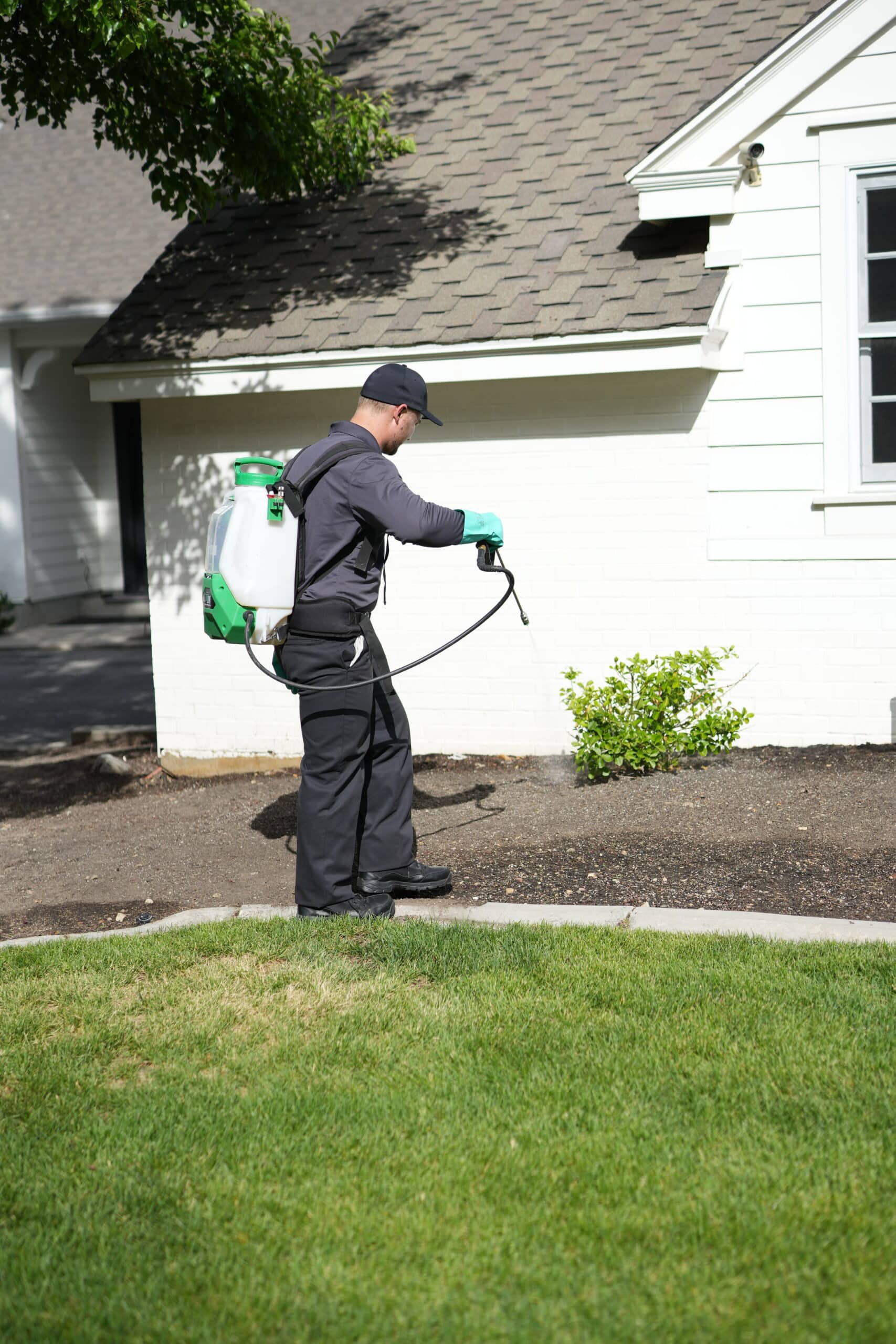Wasp and Hornet Pest Control Services
hawx is always reliable. always innovative.
20,000+ 5-STAR REVIEWS
“Connors Trader went the extra mile to make sure he listened to our needs regarding the ant problem we had.”
- Larry
“He sprayed indoors and out, swept my eaves for spider webs and took care of a couple of wasp nests.”
- Rick
“He even sprayed on my deck, which no one else has done.”
- Sue
Get $150 Off Wasp & Hornet Service

Wasps and hornets can be a nuisance around your home, raising concerns about stings. The good news is that with professional pest control for wasps and hornets, you can address infestations and enjoy your yard and outdoor living spaces with less worry.
What is the best pest control method for wasps and hornets?
The best method for wasp and hornet pest control is one tailored to the unique characteristics of your property. With Hawx, our technicians will check the location of any nests you’ve found, and then thoroughly inspect the perimeter of your home, looking for any additional nests or gaps where hornets and wasps could get inside.
After an inspection, pest control technicians can proceed with wasp and hornet removal, safely removing and eliminating any nests. The area or areas where nests were located will typically be treated with sprays as part of a wasp and hornet removal service.
Next, pest control technicians will treat other potential nesting sites for hornets and wasps and any trouble areas where the pests may find entry points into your home. Depending on the location of these sites, our experts may use sprays, granules, or dust products.
Prevention should also be a part of a effective pest control treatment plan for stinging insects. Technicians will take the time to provide tips on protecting your home from pests in the future and, if necessary, recommend a treatment schedule to help reduce the risk of infestations going forward.
How does wasp and hornet treatment work?
Wasp and hornet pest control works by targeting current nesting sites, potential nesting sites, and entry points in a home. By applying the right products to these areas, pest control technicians can kill and deter the pests.
Although you can buy DIY wasp and hornet control products, you may not get the same results as you would with professional services (and you might risk getting stung!). Licensed pest control technicians know how to safely remove nests and locate potential problem areas you may miss with do-it-yourself treatment.
How much does professional wasp and hornet treatment cost?
The cost for wasp or hornet extermination services depends on a variety of factors, including the size of your property and the location of the nest. Regardless of the pest control wasp removal cost, professional pest control technicians should be able to clearly explain what work was done so you know exactly what you’re paying for.
Can Hawx Pest Control help me get rid of wasps and hornets?
Hawx Pest Control is ready to assist with your wasp or hornet problem. Our knowledgeable pest control technicians can thoroughly inspect your home and develop a treatment plan geared toward your specific needs. With our mobile app, you’ll receive a service report that provides a detailed explanation of everything we did to treat hornets and wasps. You can even see pictures of our technicians performing the steps for complete transparency.
Get $150 Off Wasp & Hornet Service
Read more about wasps and hornets

Wasp Woes: Managing Wasp Nests Safely in Tampa Yards
Wasp Woes: Managing Wasp Nests Safely in Tampa Yards Welcome to the sunshine state, where it’s hot, it’s humid, and the wasps are out to

Buzzing Nuisances: Dealing with Wasp Infestations in Raleigh Yards
Buzzing Nuisances: Dealing with Wasp Infestations in Raleigh Yards What’s that buzzing sound? Oh, just another wasp circling your head again? If you live in

How to Deal With Cicada Killer Wasps
Cicada killer wasps appear in backyards across the U.S. during summer. These ground-dwelling wasps are large and intimidating but aren’t aggressive like yellow jackets. Still,



